Early Summer
June 22 to August 5
The Drying begins with the summer solstice, the longest day of the year, whether midsummer, St. Johns Day, Ukon juhla, Lithia, Kupala, Tiregān, Klidonas, or Päiväkäändjäne . Whether celebrating “yin” forces, collecting water from the sea, eating pickled herring, or drinking lots of vodka, it is a global holiday, often including a bonfire. The wetting rains are mostly finished. The green world senses this edge, and switches from growth to insuring the survival of future generations.
The purpose of growth shifts from expanding foliage to making seed. The first fruits become ripe, and we begin to tap into our stores of water to support our agricultural projects.
Wild Creatures and Wildcraft
Juvenile salmon are heading to the open water. Streams begin their hydrologic decline, increasingly depending on groundwater captured in winter. Flowers are mostly gone, and replaced with green fruits, pods, or capsules. The spring flush seems less succulent, as the whole forest seems to shrink a little. As free water is depleted, every drink takes a little more work.
Berry season comes in a cascade that begins with strawberries and salmonberries, red huckleberries, followed by thimbleberries, amalanchier, evergreen huckleberry, and the vast mother-load of salal. You can follow berries up the mountain slopes culminating in the harvest of high mountain huckleberries, where vast fields were maintained with fire since time before memory. Greens are still present, with lamb’s quarters, young dock, and nipplewort, but selecting the right stock in the right place is increasingly important to avoid excess bitterness.
Revegetation
If you are going to provide water, now might be a good time to offer on last deep drink before hardening of shoots. The growth you see now, is most of what you’ll get this year. Now comes the test of survival. Did roots grow deep enough to make it through the first season? Did the right stock end up in the right place at the right time?
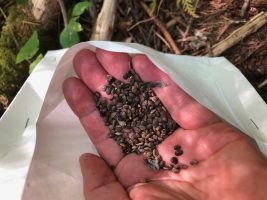 The spring ephemerals are going to seed, and signal the beginning of the seed collection season which will last from now through harvest. A species may yield a few weeks early or late, depending on the pace of the drying, but in an orderly manner, one species after another, plumps, dries, and shatters its genetic life capsules into the soil seed bank. Seed harvesters intercept dry seed, advocates for plant dispersal. For some species the window of opportunity may be only a few days.
The spring ephemerals are going to seed, and signal the beginning of the seed collection season which will last from now through harvest. A species may yield a few weeks early or late, depending on the pace of the drying, but in an orderly manner, one species after another, plumps, dries, and shatters its genetic life capsules into the soil seed bank. Seed harvesters intercept dry seed, advocates for plant dispersal. For some species the window of opportunity may be only a few days.
At the nursery the endless watering begins. Daily for the exposed pots, or those that were potted in too small of homes. You can wait longer for stock that is heeled in, or in the ground, or even longer in capillary beds. This is where minimizing stock in pots suddenly makes more sense.
Monitoring of vegetation continues, with each plants sexual parts on full display. Grass flowers come into full form, with less familiar parts seldom explored: glumes, lemmas, and paleas. Unwanted weeds put all their energy into shoots and flowers and so pulling will have maximum effect.
The Garden
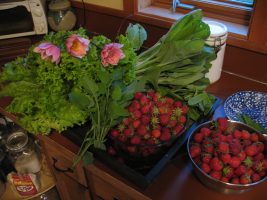 In the food garden warm season crops are all in the ground and growing. As in the native nursery, the watering begins. Daily for the second wave of seeds every few days for other crops. Perhaps an inch a week, either from sprinklers, or less if dripped under mulch. Watering and weeding becomes most of gardening.
In the food garden warm season crops are all in the ground and growing. As in the native nursery, the watering begins. Daily for the second wave of seeds every few days for other crops. Perhaps an inch a week, either from sprinklers, or less if dripped under mulch. Watering and weeding becomes most of gardening.
The harvest from spring plantings has arrived: salad, greens, young suculent roots. The earliest vegetable fruits, are watched carefully: squash, cucumbers. The real heat lovers, the tomato family of solanaceae are always lagging.
This is the season for the second major planting in the Maritime garden calendar. In the drying, most of the overwinter foods go in the ground: kale and all the other brassicaceae, including root crops likes turnips and rutabega. Also there are carrots and parsnips, and the spinach clan, including beets and chard. Hardy lettuce relatives like endive and escarole. These plantings may include both fall harvest, as well as overwintering varieties of broccoli or fava beans, that won’t yield until spring, but will precede spring plantings, filling the gap in March and April.
Project Management and Hazards
Earthworks are underway. The ground is dry, and the risk of storms is past. The spring freshet in snow-fed rivers is over. Erosion management is replaced by dust management.
Community Schedules and Recreation
Summer schedules make organizing difficult. Agencies workers with paid time off are are a revolving door of vacation messages. Construction crews are working overtime, saving up for the winter lull. Kids are in programs or daycare or with relatives or on vacations.
During the Drying the high country opens up. Starting with patches of snow, then buggy, and finally glorious with flowers. Drying is a window before the risks of the fire season. Increasingly as climate change and generations of bad forest management come due, periods of smoke in summer will become a constant companion.
Politics and Government
The state budget is complete. If there are new initiatives and programs are ramping up. If there are cuts, managers are shuffling staff and budget around to fill holes and tighten belts.
The election season and the federal budget discussions are in full swing. Of course is just as likely that there will still be no budget by the end of the fiscal year. But the nature of the struggle to govern varies based on whether its an election year. The Drying culminates in August recess, when congress returns to their districts. Much preparation is made for their return, as this is when local lobbies can get access to their elected representative, take them on tours, and guide their thinking, or hold them accountable.
Previous: Bloom
Next: Harvest
This post is part of a standing body of work to capture the seasonal nature of our social-ecological lives, and how they might apply to the work of the Ecosystem Guild and Restoration Camping.


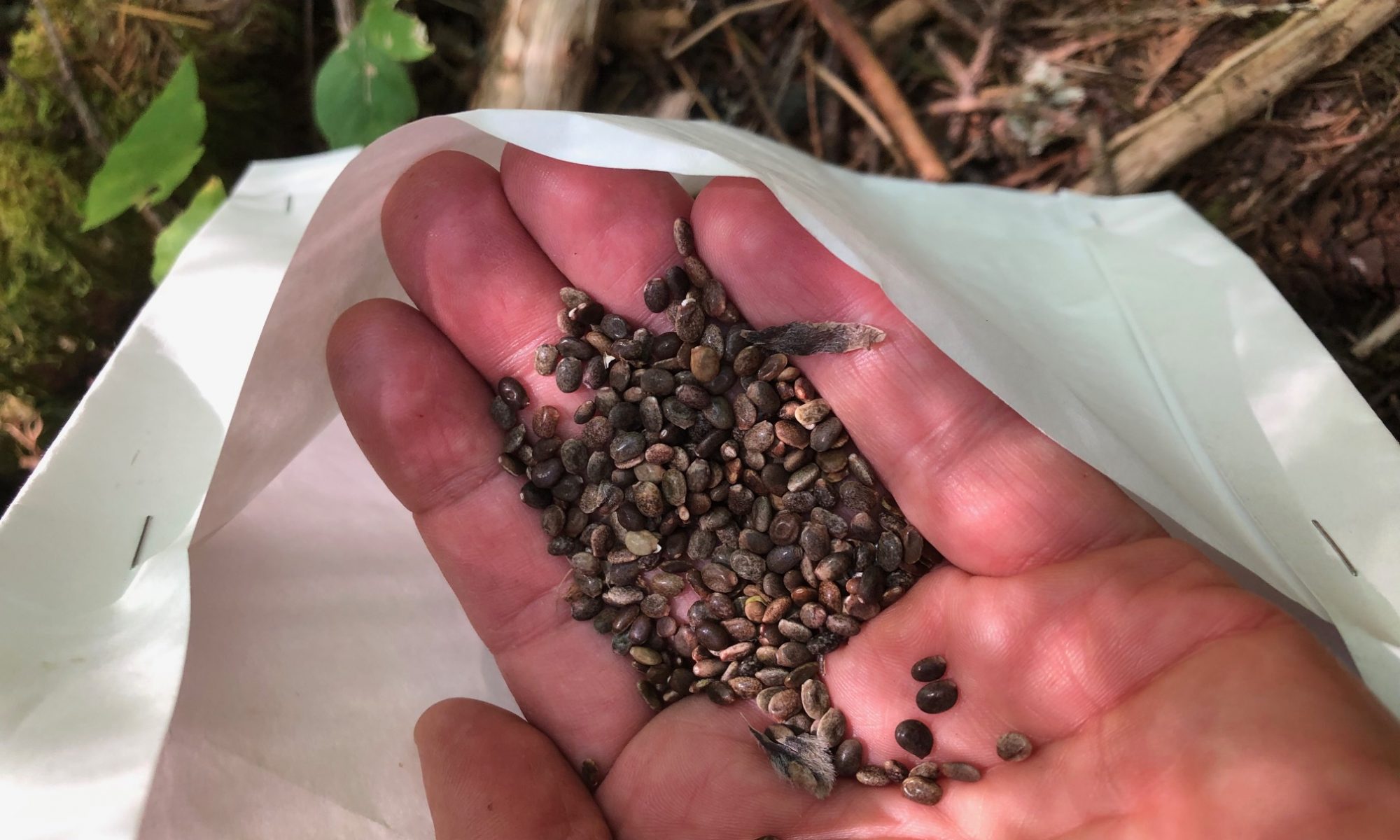

 Chinook salmon smolts linger in estuaries. In rivers with spring freshets melting snow there may be returns of “spring Chinook” that come to hold in rivers until spawning in fall. These precious runs, stocked with oceanic fats, are now mostly gone, or hanging on by a few hundred individuals hunting for cold water in summer. Coho fry avoid the mai stem, heading for cool ponds and wetlands to over-summer. The flush feast of salmon smolts pouring into the estuaries and shorelines all spring are coming to an end.
Chinook salmon smolts linger in estuaries. In rivers with spring freshets melting snow there may be returns of “spring Chinook” that come to hold in rivers until spawning in fall. These precious runs, stocked with oceanic fats, are now mostly gone, or hanging on by a few hundred individuals hunting for cold water in summer. Coho fry avoid the mai stem, heading for cool ponds and wetlands to over-summer. The flush feast of salmon smolts pouring into the estuaries and shorelines all spring are coming to an end. With the end of the frost and warming soil, the full summer garden goes in the ground: nightshades, cucurbits, beans, and corn. Germination is fast and reliable, as long as seeds are kept moist. Irrigation systems are deployed, and hopefully have been tested and repaired back in spring time. Periods of cloudiness make for good transplanting and seeding. Occasional hot days are good for weeding. Cloches and row covers are retired.
With the end of the frost and warming soil, the full summer garden goes in the ground: nightshades, cucurbits, beans, and corn. Germination is fast and reliable, as long as seeds are kept moist. Irrigation systems are deployed, and hopefully have been tested and repaired back in spring time. Periods of cloudiness make for good transplanting and seeding. Occasional hot days are good for weeding. Cloches and row covers are retired.
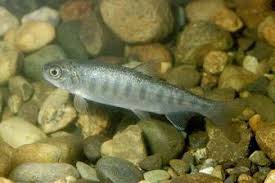

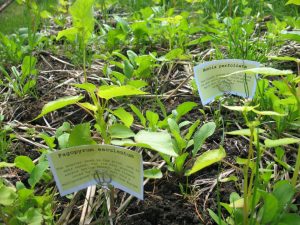

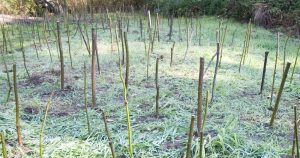 The final push to get all bare stock in the ground is now. Everything left un-planted must be potted up and watered for another summer–good motivation to keep planting. Elderberry (Sambucus spp.) will break buds early and are particularly vulnerable if they unfurl leaves with weak roots. Cuttings can be thrown in the cooler to buy time.
The final push to get all bare stock in the ground is now. Everything left un-planted must be potted up and watered for another summer–good motivation to keep planting. Elderberry (Sambucus spp.) will break buds early and are particularly vulnerable if they unfurl leaves with weak roots. Cuttings can be thrown in the cooler to buy time.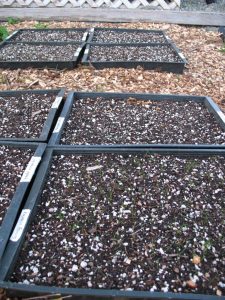 Bed preparation is underway for the earliest crops, if you can find a dry week to do the work. Any mulch laid in fall is now thin and rotten. Perennials that have hidden all winter may show their shoots enough to be dug and divided. Overwintering crops will also wake up soon. Any remaining root crops, often biennials by evolution, will soon begin their final expenditure. There will soon be abundant shoots and seeds from overwintering mustards.
Bed preparation is underway for the earliest crops, if you can find a dry week to do the work. Any mulch laid in fall is now thin and rotten. Perennials that have hidden all winter may show their shoots enough to be dug and divided. Overwintering crops will also wake up soon. Any remaining root crops, often biennials by evolution, will soon begin their final expenditure. There will soon be abundant shoots and seeds from overwintering mustards.
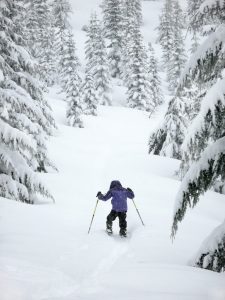


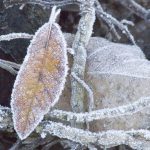 November 5 to December 22
November 5 to December 22
 Only leaves in greenhouses and the hardiest of species remain. The nibbling weekly harvest of roots and leaves gradually depletes the stock build in the plantings begin in harvest and earlier. There will be no new food until Budswell. Storm damage thrashes at both structures and crops. Hardest frosts take their toll.
Only leaves in greenhouses and the hardiest of species remain. The nibbling weekly harvest of roots and leaves gradually depletes the stock build in the plantings begin in harvest and earlier. There will be no new food until Budswell. Storm damage thrashes at both structures and crops. Hardest frosts take their toll.
 With the rains, fall-running salmon that have been holding near stream mouths all over Puget Sound begin to return, first to the larger rivers, then to streams. The nights become cold, and fog clogs the morning. The first tentative frosts usually comes sometime in leaf-fall and the orb-weaver spiders collect dew on their webs.
With the rains, fall-running salmon that have been holding near stream mouths all over Puget Sound begin to return, first to the larger rivers, then to streams. The nights become cold, and fog clogs the morning. The first tentative frosts usually comes sometime in leaf-fall and the orb-weaver spiders collect dew on their webs.
 The salmon haven’t yet begun to spawn. Some early runs may be in the rivers already, huddling in deep pools of cold water. Young-of-the-year coho salmon are fattening in beaver ponds and forested wetlands, also looking for shady seeps that promise oxygen. The birds have fledged, and young-of-the-year deer are growing fast looking for the last succulent pastures. The gathering of seeds and nuts begins in earnest. The jays shake hazelnuts daily waiting for the right moment to begin their work. The day length is shortening with increasing speed. Toward the end of harvest season fall will make its first visit. A rain that doesn’t feel like summer, the smell of the cooling evening, and the changing quality of light at dusk and dawn as summer fades.
The salmon haven’t yet begun to spawn. Some early runs may be in the rivers already, huddling in deep pools of cold water. Young-of-the-year coho salmon are fattening in beaver ponds and forested wetlands, also looking for shady seeps that promise oxygen. The birds have fledged, and young-of-the-year deer are growing fast looking for the last succulent pastures. The gathering of seeds and nuts begins in earnest. The jays shake hazelnuts daily waiting for the right moment to begin their work. The day length is shortening with increasing speed. Toward the end of harvest season fall will make its first visit. A rain that doesn’t feel like summer, the smell of the cooling evening, and the changing quality of light at dusk and dawn as summer fades.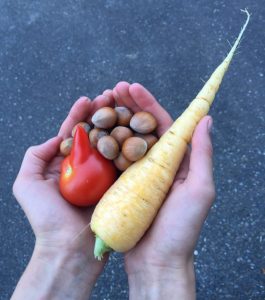 Even with irrigation, the garden peas yellow in the heat, and the second plantings of spring are ready for harvest. The summer crops come into full swing—beans, tomatoes, cucumbers, squash. Smaller fruits give way to larger fruits, and the first apples ripen.
Even with irrigation, the garden peas yellow in the heat, and the second plantings of spring are ready for harvest. The summer crops come into full swing—beans, tomatoes, cucumbers, squash. Smaller fruits give way to larger fruits, and the first apples ripen. 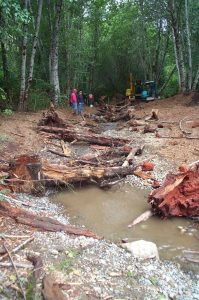 With the streams at lowest flow, this is the hurried peak of in-water construction. Stream reconstruction, log jam installation, levee and dike modification, and excavations to restore wetlands are preferably completed “in-the-dry” and isolated from aquatic life. Restoration teams, working under detailed permits, push hard to get work complete before the “fish window” closes, before the first salmon runs return with the rains.
With the streams at lowest flow, this is the hurried peak of in-water construction. Stream reconstruction, log jam installation, levee and dike modification, and excavations to restore wetlands are preferably completed “in-the-dry” and isolated from aquatic life. Restoration teams, working under detailed permits, push hard to get work complete before the “fish window” closes, before the first salmon runs return with the rains.